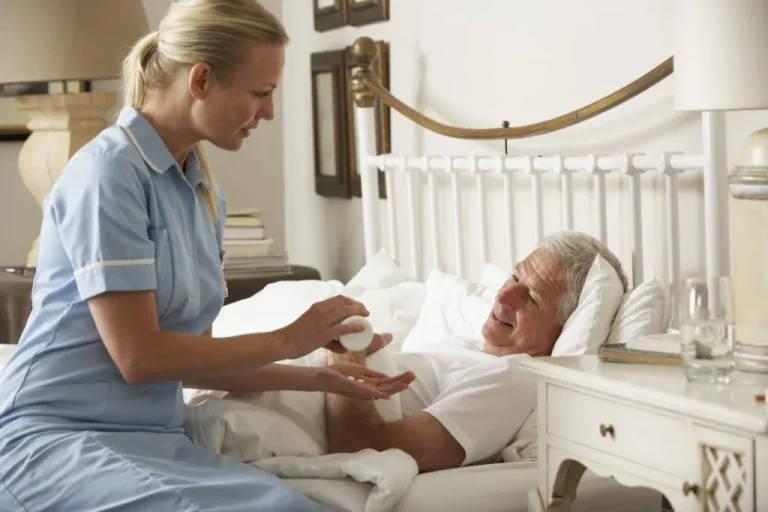Community nurses must play a central role in the development of the government’s plans for a new ‘neighbourhood health service’, according to leading figures who represent those who work in the setting.
They also called for investment in developing existing community services and staff, arguing that much of what the government wanted to do was already underway but needed more funding to be done at scale.
On Thursday, prime minister Sir Keir Starmer unveiled the government’s 10 Year Health Plan for the health service in England.
“We’re still seeing a reduction in district nurses and general practice nurses, and we’ve got to reverse that”
Steph Lawrence
The document outlined his government’s vision for the next decade of the health service, with dozens of promises and pledges on how the NHS could be brought back from a state of perpetual crisis.
One of the headline sections of the plan, which has previously been cited as one of three core government NHS ambitions, is a “shift” from a focus on hospital care to providing healthcare in the community.
This includes creating a “neighbourhood health service”, where multidisciplinary teams of professionals from diagnostics, mental health, post-operative care, nursing and more could operate under “one roof”.
They would operate from “one stop shop” neighbourhood health centres, the first of which are due to be set up in low-income and poor health outcome areas, the plan said.
It also stated that outpatient care would be almost entirely moved out of hospitals into this neighbourhood model, alongside investment in GP clinics and the NHS app to drive improvements in access.
The ambitions in this section of the plan have been welcomed by leading figures in community nursing, though they called for more detail on its delivery.
Steph Lawrence, chief executive of the Queen’s Institute of Community Nursing (QICN), welcomed the greater emphasis on healthcare being delivered in the community.
Ms Lawrence, whose organisation represents and supports develop district and other community nurses, said delivering care “where people want to be” was, in her view, the right direction to be taking the NHS in.
She was broadly supportive of the neighbourhood health service model. “I think the concept is absolutely right,” said Ms Lawrence, whose organisation was until recently called the Queen’s Nursing Institute.
“If I needed some diagnostic intervention, and I could go to a centre down the road from me rather than going to a hospital, absolutely, that would definitely be the right thing to do,” she noted.

Steph Lawrence
“The communities are where people live, and that’s where we should be providing the majority of care… I think it’s the right place to look after people.
“It’s certainly where I would want to be looked after. But again, we’ve got to have the right skills and ability.”
Ms Lawrence also welcomed the government’s plans to improve the digital infrastructure of the health service, hoping this could help remove some frustrations the district nursing workforce current faces regarding poor equipment.
However, Ms Lawrence warned that a lot of groundwork was necessary before such a plan could be put into motion.
Workforce development, cultural, change and bolstering the existing community healthcare offering had to come as a priority, she said.
Ms Lawrence explained that more specialist district nurses had to be trained in order for the ambitions of the plan to pay off, and that they must be paid at a minimum of Agenda for Change band 7, to acknowledge the important role they play.
“They’re autonomous practitioners, they’re non-medical prescribers, they manage situations on a day-to-day basis where they are the only clinical professional there, and they have to make on the spot judgments, clinical judgments,” she said.
The QICN chief executive said that recent decisions by the government may impede this, such as the scrapping of state funding for Level 7 apprenticeships, by which many nurses go on to qualify as specialist district nurses.
Ms Lawrence said: “We have to think about an alternative, if level 7 apprenticeship [funding is cut], and that’s what we’ve been told, then there needs to be an alternative plan.
“We’re still seeing a reduction in district nurses and general practice nurses, and we’ve got to reverse that,” she told Nursing Times.
As well as this, Ms Lawrence warned that the government’s eagerness to reform should not come at the expense of existing services.
For example, she said: “I’ve been a district nurse for the last 25 years and working in an integrated neighbourhood model is what I’ve done ever since I started that role.
“I think we’ve got to be careful here that we’re not trying to invent something new, and I think we need to build on what we’ve already got.
“There needs to be a more specific focus on those services that are already there: our district nurses, our adult social care nurses, our general practice nurses, and, of course, health visitor school nurses, children’s nurses.
“I think we should be looking at those as the core, because this is the core of their job; we keep people out of hospital every single day, up and down this country, we facilitate early discharges.”
Ms Lawrence emphasised that the government should not “ditch what we’ve got”, and need to invest in these services alongside whatever systemic change it envisioned.
Meanwhile, Mary Lewis, chief nurse and allied health officer at Sirona Care and Health, said community healthcare providers themselves stood ready to help the government’s drive to move care out of hospitals.
Ms Lewis, a district nurse by background, was, overall, supportive of the neighbourhood care model the government has decided to pursue.
Like Ms Lawrence, she thought that much of what the government had planned could, and should, build upon the existing work of community health providers.
She said nurses must be given a central role in developing any new health centres, said Ms Lewis, who works for a community interest company providing services across Bristol, South Gloucestershire and North Somerset.
“Our community nurses and allied healthcare professionals are already working out there… so let’s utilise their skills and build on those [services],” she told Nursing Times.

Mary Lewis
Ms Lewis said she would like to see more detail from the government on what the neighbourhood model would look like, and outlined some of her hopes for what would come out of the reforms.
For example, Ms Lewis said she would welcome improvements to diagnostics access, which could come from the government’s plans to move outpatient care into the community.
As well as this, she said she would like to see investment in virtual wards and developing the community nursing workforce itself.
“We have people in the community receiving complex care now, and we could do more and more of that if we get… enough nurses,” she said. “It’s got to be an investment, it’s not going to be completely free.
She added: “We need the capacity to manage the demand. The demand is huge, and the demand is going up.”
Read more on the 10 Year Health Plan

